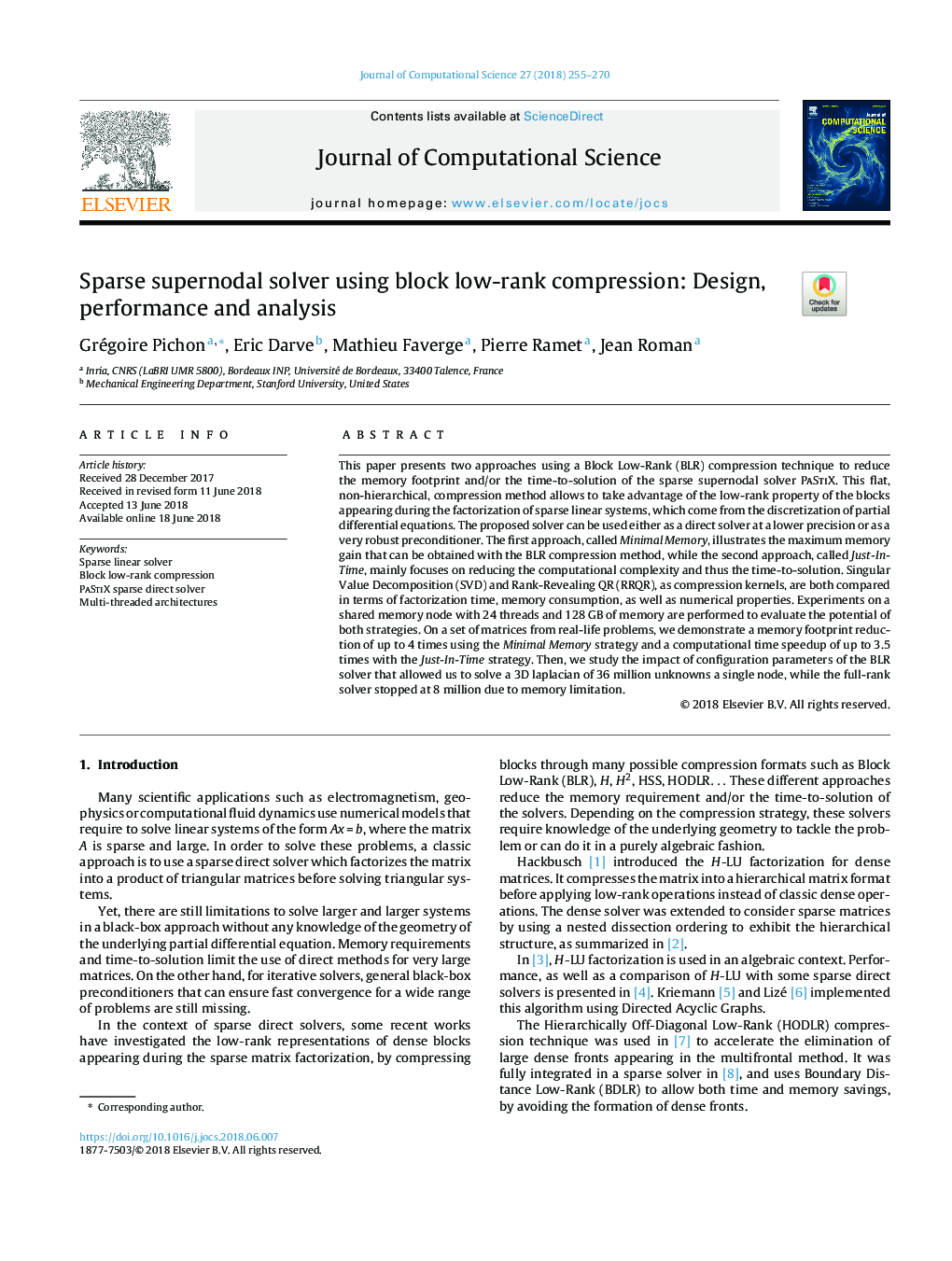| Article ID | Journal | Published Year | Pages | File Type |
|---|---|---|---|---|
| 6874329 | Journal of Computational Science | 2018 | 16 Pages |
Abstract
This paper presents two approaches using a Block Low-Rank (BLR) compression technique to reduce the memory footprint and/or the time-to-solution of the sparse supernodal solver PaStiX. This flat, non-hierarchical, compression method allows to take advantage of the low-rank property of the blocks appearing during the factorization of sparse linear systems, which come from the discretization of partial differential equations. The proposed solver can be used either as a direct solver at a lower precision or as a very robust preconditioner. The first approach, called Minimal Memory, illustrates the maximum memory gain that can be obtained with the BLR compression method, while the second approach, called Just-In-Time, mainly focuses on reducing the computational complexity and thus the time-to-solution. Singular Value Decomposition (SVD) and Rank-Revealing QR (RRQR), as compression kernels, are both compared in terms of factorization time, memory consumption, as well as numerical properties. Experiments on a shared memory node with 24 threads and 128 GB of memory are performed to evaluate the potential of both strategies. On a set of matrices from real-life problems, we demonstrate a memory footprint reduction of up to 4 times using the Minimal Memory strategy and a computational time speedup of up to 3.5 times with the Just-In-Time strategy. Then, we study the impact of configuration parameters of the BLR solver that allowed us to solve a 3D laplacian of 36 million unknowns a single node, while the full-rank solver stopped at 8 million due to memory limitation.
Keywords
Related Topics
Physical Sciences and Engineering
Computer Science
Computational Theory and Mathematics
Authors
Grégoire Pichon, Eric Darve, Mathieu Faverge, Pierre Ramet, Jean Roman,
